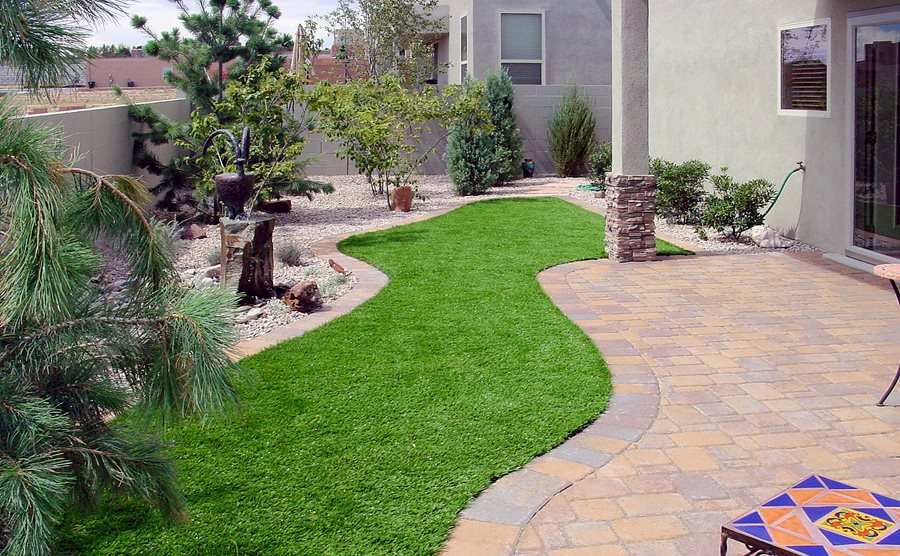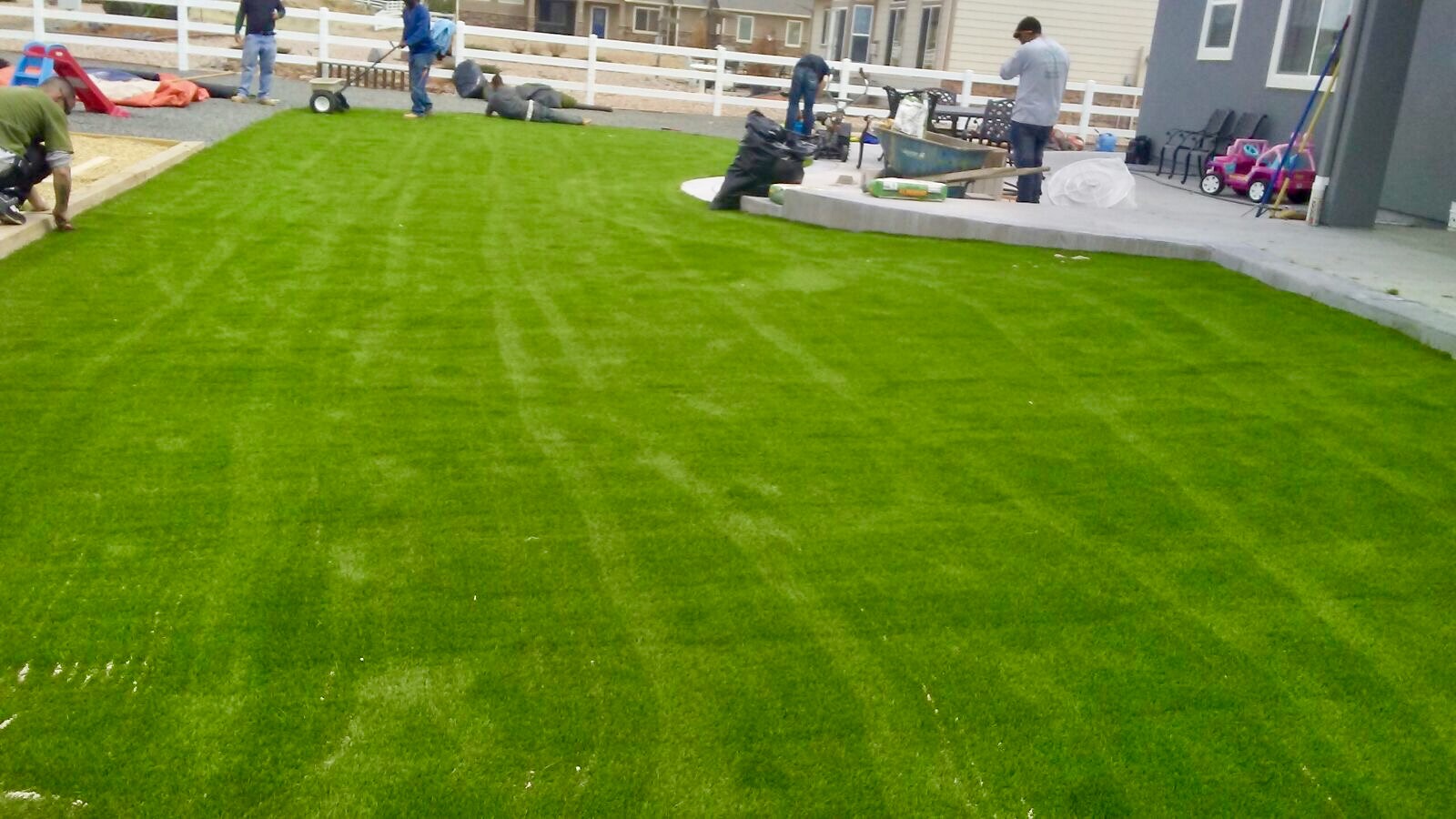Environmentally Safe Arizona Artificial Turf for a Year-Round Lush Green Lawn
Environmentally Safe Arizona Artificial Turf for a Year-Round Lush Green Lawn
Blog Article
Delve Into the Environmental Perks of Opting for Artificial Lawn Solutions
The fostering of man-made turf services provides a compelling opportunity to attend to pushing ecological difficulties. By considerably lowering water use and lessening the application of unsafe chemicals, these alternatives not just promote sustainable landscape design yet also protect neighborhood communities. Moreover, the reduced carbon impact connected with lowered upkeep tasks adds to a more sustainable strategy to land administration. Nevertheless, the effects of these advantages prolong beyond mere conservation efforts, raising inquiries about their long-term effect on habitat conservation and general ecological equilibrium. Discovering these dimensions exposes a complicated interplay worth taking into consideration.
Water Preservation Conveniences
One of one of the most significant advantages of artificial lawn is its ability to save water. Conventional lawn lawns need considerable irrigation, especially in areas susceptible to dry spell or water limitations. On the other hand, synthetic grass does not require watering, substantially decreasing the overall demand for water sources. This function is especially valuable in deserts where water shortage is a pressing worry.
By removing the demand for routine watering, synthetic grass contributes to lasting landscape techniques and helps alleviate the ecological impact of extreme water usage. The preservation of water expands to the reduction of overflow, which can lead to dirt disintegration and river pollution.
Furthermore, the installation of man-made lawn permits communities and property owners to allocate water sources more efficiently, focusing on essential usages such as alcohol consumption water and farming. The change in the direction of synthetic grass not only promotes accountable water use yet additionally straightens with wider ecological objectives aimed at protecting all-natural sources.
As neighborhoods progressively focus on sustainability, the water preservation advantages of man-made grass provide an engaging instance for its fostering in domestic and business landscaping jobs.
Minimized Chemical Usage
The transition to synthetic grass significantly lowers the reliance on chemical therapies frequently utilized in all-natural lawn maintenance. Standard grass administration commonly entails the application of herbicides, plant foods, and pesticides to promote growth and control pests. These chemicals can posture risks to human health and wellness, local wildlife, and the environment, adding to soil and water contamination.
In contrast, fabricated turf gets rid of the demand for these damaging materials. By minimizing the launch of artificial compounds into the community, man-made turf promotes healthier dirt and water systems.
Furthermore, the lack of chemical runoff related to fabricated grass installations assists secure local waterways from pollution, supporting water life and preserving biodiversity. Artificial turf companies phoenix. As areas increasingly focus on sustainable methods, going with man-made grass presents a feasible option that lines up with environmental preservation objectives. With this shift, homeowner can delight in lush green areas without jeopardizing environmental health, leading the way for a much more sustainable future
Reduced Carbon Footprint

Moreover, the installment of artificial grass can cause considerable water preservation. All-natural yards need significant quantities of water for watering, which not only includes in the carbon impact associated with water extraction and therapy yet also stress neighborhood water sources. In comparison, synthetic grass needs marginal maintenance, requiring no watering, consequently significantly lowering water usage and its connected energy expenses.
In addition, the long life of synthetic grass contributes to its lower carbon influence. With a life-span of as much as 15 years or more, the need for frequent substitutes is reduced, resulting in much less waste and reduced power usage in production visit this website and taking care of traditional grass options. On the whole, man-made turf presents a sustainable choice for ecologically mindful landscaping.
Environment Conservation
Habitat preservation is a crucial factor to consider in the discussion over landscape design options, particularly when comparing synthetic grass to natural yard. All-natural yard lawns often require extensive upkeep, including making use of plant foods, herbicides, and pesticides, which can negatively impact local communities. These chemicals can seep right into the soil and rivers, hurting native vegetation and fauna and interfering with regional habitats.
In comparison, synthetic grass provides an opportunity to reduce the eco-friendly footprint of landscape design. By going with artificial turf, house owners can minimize the interruption of all-natural habitats associated with typical yard care methods. Artificial grass removes the need for hazardous chemicals, therefore protecting close-by wildlife and keeping the integrity of surrounding ecological communities. The installation of man-made lawn can lead to the conversion of previous yard locations into more biodiverse landscapes, such as pollinator gardens or native plant areas, which Read Full Article can sustain regional wildlife.
Ultimately, the transition to synthetic grass not only conserves water and reduces maintenance efforts but additionally cultivates a more unified partnership in between human tasks and the native environment, promoting environment conservation while doing so.
Long-Term Sustainability
Long-lasting sustainability is a crucial consider evaluating the advantages of synthetic grass over traditional lawn lawns. Among the most considerable advantages of synthetic grass is its sturdiness; it can last approximately 15-20 years with very little maintenance, whereas all-natural turf needs frequent reseeding and substitute. This durability reduces the requirement for consistent resources, such as water, plant foods, and pesticides, which are necessary for maintaining a healthy and balanced grass yard.
Furthermore, synthetic grass adds to a decrease in carbon emissions connected with grass care devices. Traditional grass commonly require gas-powered mowers, leaners, and blowers, every one of which add to air contamination. Turf installation phoenix az. In contrast, synthetic grass eliminates the requirement for such devices, advertising a cleaner environment
Additionally, the production of man-made lawn increasingly uses recycled products, enhancing its sustainability account. As suppliers adopt eco-friendly methods, the environmental footprint of synthetic lawn remains to decrease.

Final Thought
The adoption of man-made lawn remedies provides substantial ecological benefits, consisting of significant water conservation, minimized dependence on damaging chemicals, and a lower carbon footprint. Furthermore, synthetic grass aids in preserving natural environments by lessening land disturbance and promoting long-term sustainability with making use of long lasting materials. Collectively, these variables emphasize the possibility of synthetic grass to contribute favorably to ecological health and wellness and offer a viable choice to standard landscape design methods in a progressively resource-conscious world.
In comparison, synthetic turf does not require watering, significantly lowering the general need for water resources. By minimizing the launch of synthetic substances into the ecosystem, fabricated turf advertises healthier dirt and water systems.
Moreover, the installation of man-made turf can result in considerable water preservation. In contrast, man-made turf needs marginal upkeep, needing no watering, therefore significantly decreasing water use and its associated power expenses.

Report this page